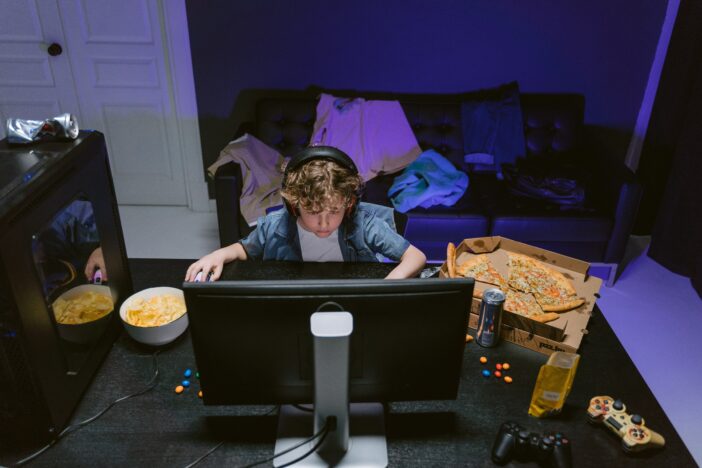With summer vacation, the excitement of being released from the confinement of classrooms and the freedom of outdoor play can soon give way to the dog days as kids look to digital adventures.
Left on their own, kids invariably turn to their devices. While opportunities abound for enjoyment and social interaction online, danger can lurk. It is important that parents acquaint, or reacquaint, themselves with what their children are up to on the digital highway. When texting, gaming or otherwise engaged online, kids can be at risk.
Safe OC, on its Online Gaming page, warns, “There is a dark side to the social interaction that can take place through these online gaming platforms, including cyberbullying, online predators and radicalization for domestic and international terrorist cells.”
Remember, wherever children can be found online, bad actors can be found as well. Groups like SafeOC have partnered with the See Something Say Something campaign to remind parents and caretakers to be on the lookout.
“Internet predators can judge by the appearance of a profile or by the behavior that a child is exhibiting online whether he or she might be a prime target for sexual grooming and exploitation,” said Kathy Hatem, Director of Communications for Enough is Enough, an online safety advocacy group. “It’s important to have ongoing discussions with your child about how to stay safe online.”
As of 2019, according to Census data, 95 percent of children ages 3 to 18 had access to the internet at home. The dangers of online activity, discussed previously in depth on Behind the Badge, are widespread. Although some of these are extremely rare, others not so much.
Estimates on the percentage of young people who have experienced cyberbullying range from more than 37 percent to 16 percent in the 2019 School Crime Supplement of the National Crime Victimization Survey of students in grades 9 to 12 and the Centers for Disease Control’s 2019 Youth Risk Behavior Surveillance System survey of high school students. And these studies predate the pandemic, when internet use and abuse exploded.
Parents must step forward
As with all areas where kids face potential danger, it is the responsibility of parents to be protectors. And it’s not easy.
According to a Pew Research group survey of parents, 66 percent say “parenting is harder today than it was 20 years ago, with many in this group citing technology as a reason why …” Additionally, 71 percent of parents of children age 12 and under are concerned their children spend too much time online and the same number worry smartphones may have more harm than benefits for young children.
As parents discuss this subject with kids, if children say their parents are too strict or that other parents aren’t limiting their kids, parents shouldn’t fall for it.
According to Pew, “Fully 86 percent of parents of a child age 5 to 11 say they limit the time of day or length of time their child can use screens, while eight-in-ten say they take away their child’s smartphone or internet privileges as punishment.”
Pew continues, “About three-quarters of parents of a child aged 5 to 11 say they check the websites the child visits or the mobile apps they use (75 percent) and use parental controls to restrict how much this child uses screens (72 percent).”
It is paramount that parents talk to children about safe online usage continually as they age and technology evolves. Most children have grown up in the virtual world and while more parents have too, technology is dynamic and ever changing.
Try to make conversations affirming and positive. This way children will be more willing to come to you if problems arise.
For parents who worry about their ability to keep pace dozens of sites provide primers on engaging with technology with children.
Numerous apps will track a child’s usage of home and mobile devices. These come at different price points and can include functions that monitor online activity, gaming, app usage, and online chatting (voice and text); block inappropriate content; provide alerts of cyberbullying, online predators, personal information requests, and notice if a child deleted the app.
Parents can check out lists, product reviews, costs, and features of apps by independent companies. Here are few:
For parents who don’t want to pay subscription fees, a number of devices have built-in controls that can be accessed. Consumer Reports has a helpful report on how to access and set controls in setting and install free controls. SafeOC also offers a Parent Support page to help parents begin conversations with their children on what signs to look out for when guarding against suspicious activity.
Here are some additional actions to consider:
- Review websites and apps accessed by your child. Entering a child’s name into a search engines such as Google, Bing, or Yahoo may provide clues.
- Make sure you are added to your child’s “friend lists” on social media and other accounts.
- Set all their profiles to “private.”
- Have all your child’s usernames and passwords.
- Check your child’s social media and gaming sites and review safety practices and privacy tools available.
- Play games with your kids. In addition to bonding with your child, you can gain insight into the games and their good and bad sides.
- If buying games, check out the Entertainment Software Rating Board (ESRB) ratings of games to see if they are appropriate.
- Approve all your children’s gaming and downloads.
- Set parental controls and security settings and make sure they are turned on.
- Most important, if you See Something, Say Something. You and your family can learn how to report suspicious activity or online scams by visiting SafeOC’s resource page on How to Report.
 Behind the Badge
Behind the Badge



